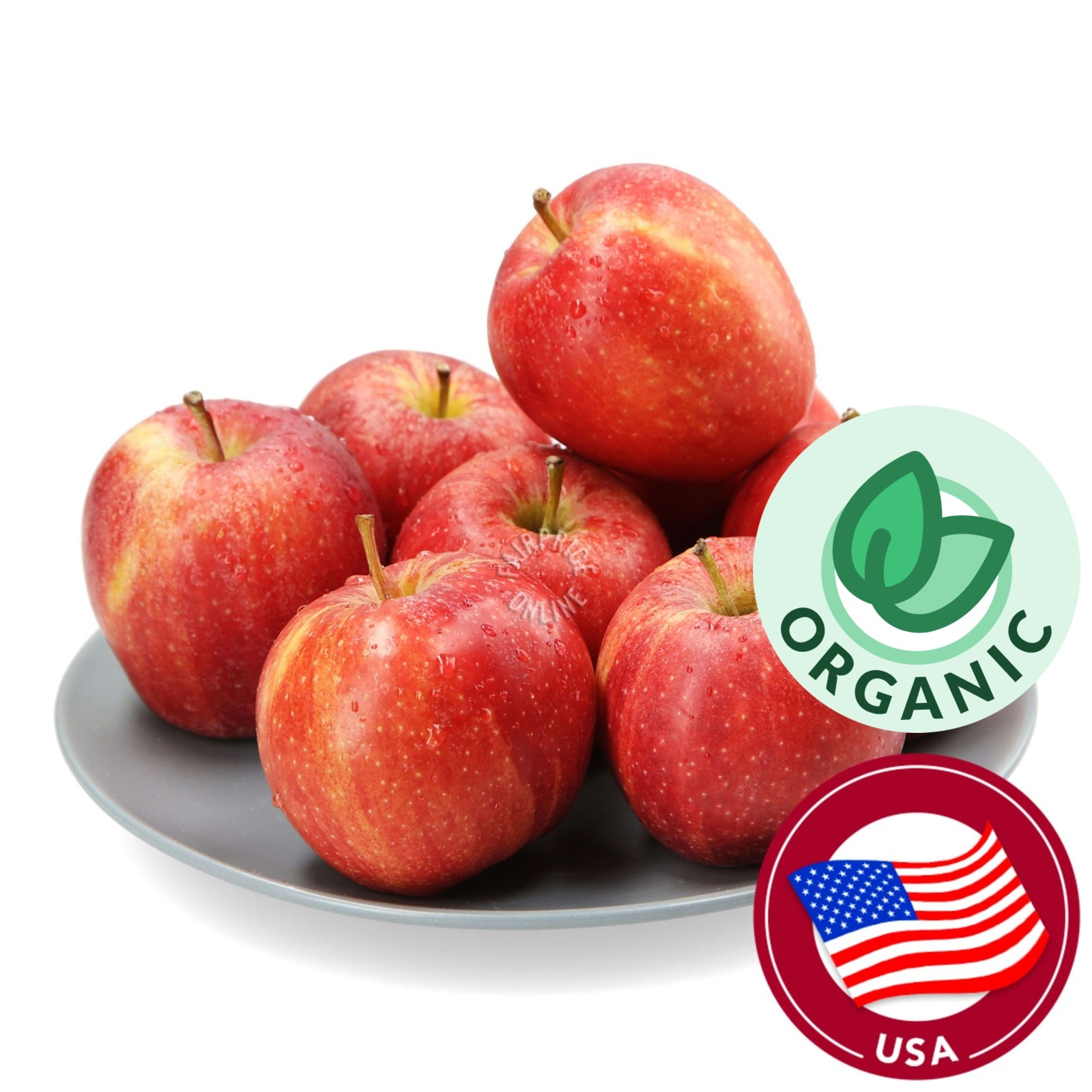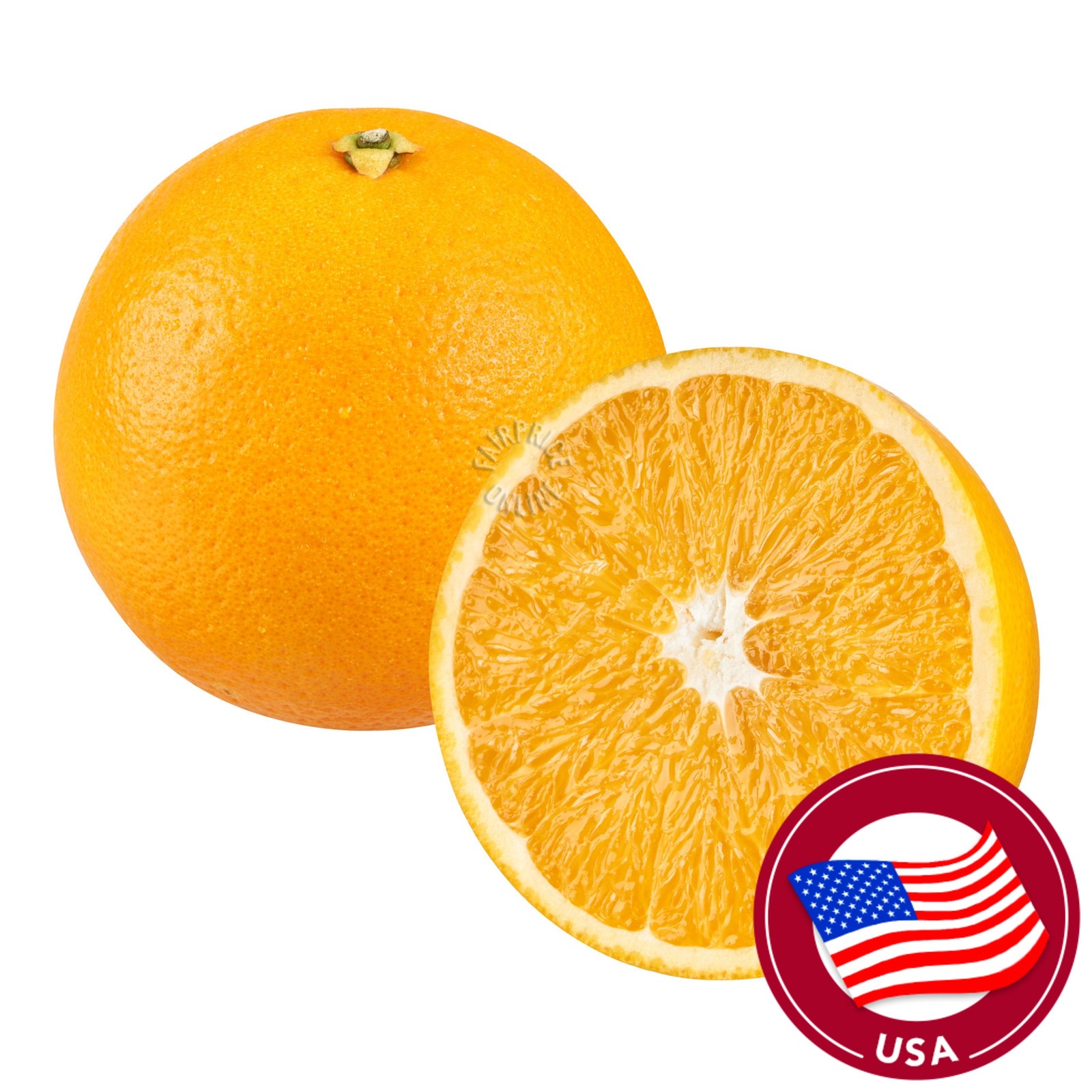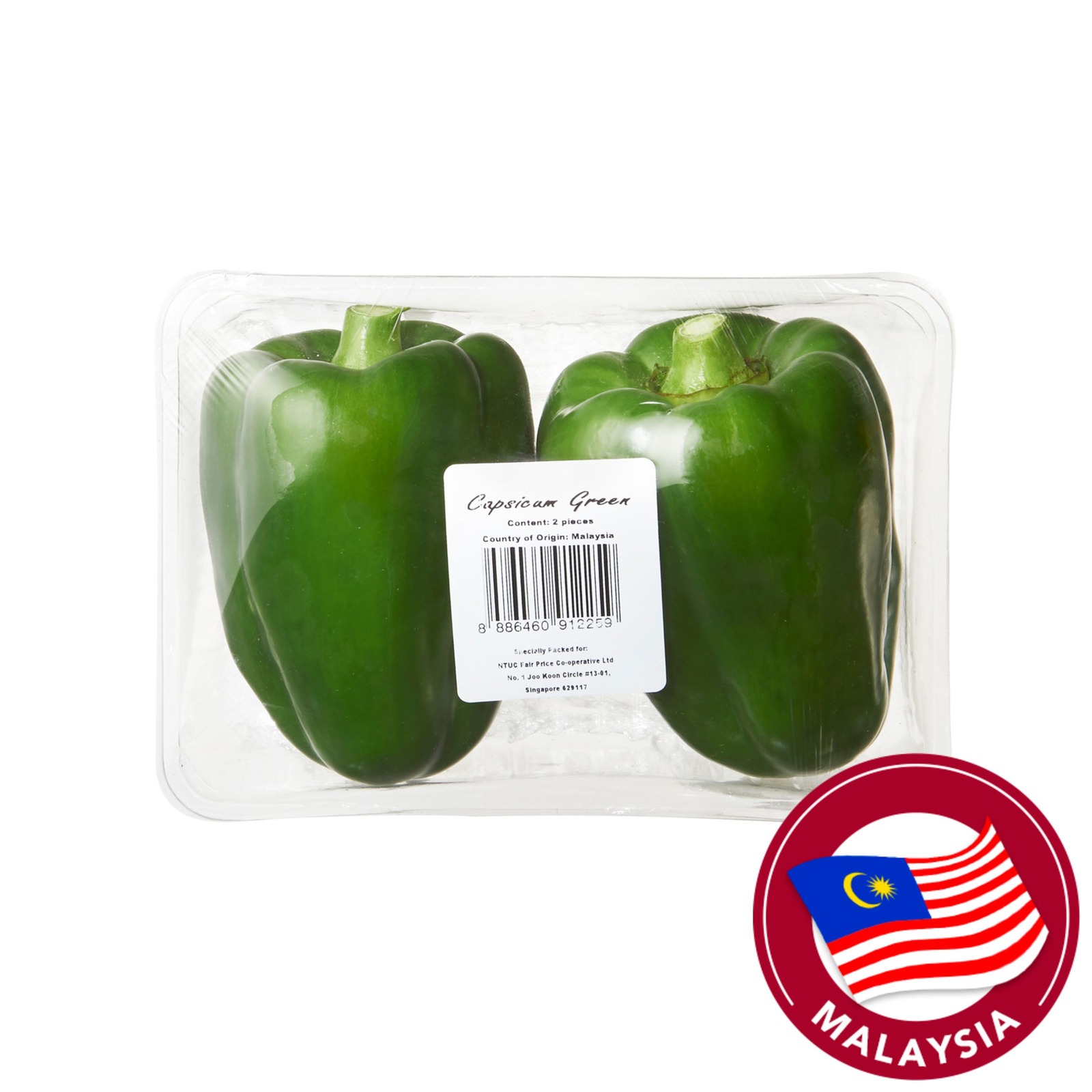Our signature pineapple tarts baking kits are coming back soon!
- About Us
- CHRISTMAS KITS
-
Baking Kits
- contact us
Our signature pineapple tarts baking kits are coming back soon!
April 02, 2020
Ever since the COVID-19 outbreak in Singapore, supermarkets have been packed with people trying to stock up on food and household items, especially with more people starting to work from home, and fears of a lockdown.
It’s a good thing to be prepared for unpredictable conditions, but we may sometimes act out of panic and stop making rational choices. While instant noodles and canned foods have long shelf lives and are easy to prepare, long term consumption of such products isn’t good for us either.
Instead of stocking up on unhealthy food products, we’ve rounded up some of the longest-lasting fresh produce and natural foods that will keep you nourished and healthy throughout this WFH season, and how to store them. They are placed under the respective categories for easier referencing: Staple Foods, Fruits, Vegetables, Proteins, and Dairy Products.
Try to whip up a special dish using the ingredients listed below in your spare time – you’ll be surprised at how easy it is to create healthy meals with minimal ingredients!
And remember, being prepared during this situation doesn’t mean stockpiling or hoarding more than what you need!
 Image Source: Fairprice
Image Source: Fairprice
If stored properly in ideal conditions, all varieties of rice can last for up to 2 years. No matter which type of rice you choose – white, brown, or red, make sure that you’re keeping it in an airtight container. Add some oxygen absorber if possible.
 Image Source: Fairprice
Image Source: Fairprice
Filling and highly nutritious, you should consider stocking up on these healthy grains this WFH season. With its high fiber content, it’ll help you control your appetite at home, and resist urges of unnecessary snacking.
Keep your rolled oats in an airtight container to protect it from moisture and other possible contaminants. Place them in a dark, cool cupboard, and they'll be able to last for 18-24 months, for most commercially-processed varieties.
 Image source: Fairprice
Image source: Fairprice
Having several kinds of dry pasta in your cupboard will keep you from getting bored of consuming the same thing over and over again. Try to use up the pasta you’ve stored longest before opening the newer ones. Dry pasta can be stored in an airtight container for up to 1 year, and don’t forget to place the container in a cool and dry place.
 Image source: Fairprice
Image source: Fairprice
Compared to most fruits and vegetables, potatoes will last way longer in your pantr - around 3 to 5 weeks. However, if you don’t know how to store them properly, they’ll start to sprout and lose their freshness. When buying potatoes, choose the ones without damages such as soft spots, mold, or pest damages as these are the ones that will stay fresh for a long time.
Store the potatoes in containers with good ventilation (cardboard box, paper bag, or basket, not plastic bags) to allow them to “breathe”. Find a cool, humid, and dark place to store them, but never in the refrigerator. During storage, make sure to check your potatoes regularly and discard any potatoes that are shriveled, soft, or sprouted to prevent them from causing more potatoes to go bad.
 Image source: Fairprice
Image source: Fairprice
Similar to white potatoes, sweet potatoes will reach their maximum shelf life when stored in a cool, dark place in a container with good ventilation. When stored in ideal conditions, sweet potatoes can last about 1 month. Sweet potatoes can be steamed, baked, or made into dishes like sweet potato fries – so keeping sweet potatoes will ensure that you have plenty of menu choices!
 Image source: Fairprice
Image source: Fairprice
Instant noodles are unhealthy because of the frying process needed to dehydrate it, and that’s why it’s not advisable to solely stock multiple cartons of instant noodles. However, you don’t need to completely refrain from eating noodles in this season, since there are lots of non-fried varieties available! They’re either air-dried or oven-dried, and still last for quite a long time. Try these Fat-Free Instant Noodles or Brown Rice Ban Mee, they’re much healthier than instant noodles and can taste equally good.
 Image source: Fairprice
Image source: Fairprice
Although crackers are highly processed and less nutritionally complete, they can still be a healthier choice of carbohydrate source during emergencies. They keep for a very long time (6-9 months) and don’t require any specific storage condition, which reduces the hassle you usually face in keeping more perishable foodstuff. Try to stock up on crackers with whole grains, less sodium, and less sugar. Crackers complement a wide array of food and you can turn them into various dishes, which keeps your weekly menu from getting monotonous.
 Image source: Fairprice
Image source: Fairprice
When stored under the right conditions, this versatile and convenient fruit can last for 4-8 weeks in your refrigerator’s fruit drawer. Some apple varieties that keep longer than the others are red delicious, fuji, gala, and granny smith. Choose apples without any damages (such as bruises and cuts) because they’re more prone to spoilage.
Wrapping your apples with newspaper and shielding them with unsealed plastic bags will also maximize their shelf life. Large apples ripe faster than the smaller ones, so it’s better to consume them earlier because they’ll trigger the ripening of other apples (so they won’t last as long). Apples can also be used to make a range of baked goods like tarte tatin and apple cobbler, so it’s always a good idea to keep some apples.
 Image source: Fairprice
Image source: Fairprice
They’re versatile, flavorful, and packed with vitamin C – what’s not to love about citrus fruits? Citrus fruits, particularly oranges and lemons, can last for 3-4 weeks in the refrigerator. Don’t wrap them in plastic bags, as it’ll make them prone to mold growth and ripening. Make sure they’re completely dry before storing them in the fridge because any moisture will also trigger mold growth. Since they can be used in various dishes and drinks, make sure to get some citrus fruits during your next grocery run!
 Image source: Fairprice
Image source: Fairprice
If they’re stored whole in a cool, dry, and well-ventilated place, pumpkins can last up to 3 months. However, most of us don’t use up a whole pumpkin in one go, leaving at least half. Store them for a longer period by wrapping them in cling-wrap and refrigerating them, or try incorporating them into different dishes and baked goods. There are lots of recipes that use pumpkins ranging from soups to muffins, so don’t hesitate to keep some pumpkins at hand.
 Image source: Fairprice
Image source: Fairprice
Drying any kind of food, including fruits, will significantly increase its shelf life. Many different types of dried fruits are available around us. Raisins, cranberries, apricots, kiwis – you name it. Although they’re not necessarily the best kinds of fruit to consume because they’re usually coated with sugar, try to find the ones without any unnecessary added ingredients. Dried fruits still contain more or less the same nutrients as the fresh ones, and they can be your vitamin source when it’s not possible to get fresh fruits.
 Image source: Fairprice
Image source: Fairprice
Another option if you need fruits that can be kept for a long time is to get some frozen fruits. Most frozen fruits can stay in the freezer for up to 1 year, which makes it possible to consume some whenever you want it. Besides, they still contain the same nutritional value as fresh fruits since they’re frozen and packed as quickly as possible after being harvested.
Frozen fruits may not taste good when consumed on their own, but you can blend them into smoothies, use them as yogurt toppings, or thaw them and swirl them into cheesecakes. Their versatility makes it easier for you to fulfill your fruit intake during these times.
 Image source: Fairprice
Image source: Fairprice
Fresh cabbage undoubtedly tastes better, but any type of cabbage (white or purple) can stay fresh in your fridge for up to 2 months. Don’t wash cabbages before storing, as it will add moisture and decrease their shelf life. If the outer leaves start to wilt or change color, just discard them and keep the rest. When you’ve cut the cabbage head into halves or quarters, wrap them with cling-wrap, and they should stay fresh for another week. Use them up in soups, salads, or roast them with your favorite meat.
 Image source: Fairprice
Image source: Fairprice
Store your carrot properly, and they’ll last in your fridge for up to a month. The vitamin A content in carrots actually increases in the first few months of storage, and that’s another good reason to keep some fresh carrots. Opt for full-sized carrots instead of baby carrots since the smaller ones will spoil more quickly. Before storing them, remove the green part if there’s any since it’ll draw moisture away and make your carrots shrivel. Make sure the outer skin is dry to prevent mold growth, and wrap them with kitchen paper before storing to remove any extra moisture.
 Image source: Fairprice
Image source: Fairprice
Capsicums are some of the few vegetables that can stay fresh for a long time, and green capsicums typically last the longest since they have lower sugar content. Don’t wash them before storing in the fridge, but put them in unsealed or perforated plastic bags, which will provide good ventilation. Place them in the crisper for the best storage conditions. When treated this way, capsicums should keep up to 2 weeks.
 Image source: Fairprice
Image source: Fairprice
Fresh cauliflower heads can last up to 2 weeks when stored properly. To maintain them for as long as possible, wrap them loosely in plastic, and place them in the crisper. When you don’t need the whole head for cooking, just break off some florets and keep the rest intact, since cauliflower will last only about a week when they’re already cut into florets. If you want to keep them even longer, blanch and freeze the cauliflower florets; this way, they’ll keep well for up to a year. Cauliflower can be used in soups, stir-fries, or even turned into cauliflower rice, which is why it’s recommended to keep some cauliflower.
 Image source: Fairprice
Image source: Fairprice
When stored in a hydrated place with sufficient air flow, celery can last for 3 to 4 weeks. That’s quite a long time! Celery tastes best when it’s still firm and crunchy. To maintain this texture, wrap your celery tightly in aluminum foil and store them in the crisper. If aluminum foil isn’t available, you can also use paper towels. This will prevent moisture from building up, which causes the celery stalks to wilt.
 Image source: Fairprice
Image source: Fairprice
Garlic has immune-boosting properties and it can be incorporated into so many dishes, so it’ll be great to stock up on some garlic. Store garlic cloves in a cool and dry place with enough ventilation, and they should last for up to 2 months. They can last even longer in the form of whole bulbs – as long as 6 months. Unlike potatoes, sprouting on garlic does not indicate that they’ve gone bad; it’s merely a sign of aging. Remove these sprouts, and the garlic’s good to go.
 Image source: Fairprice
Image source: Fairprice
Fresh, whole onions can stay fresh for 2 to 3 months in the pantry. Make sure you’re keeping them in a cool, well-ventilated area (like in a cabinet that’s far from the stove) and keep them from moisture. Don’t stack onions on top of each other and never wrap them in plastic bags. Once the onions are cut, keep them in the fridge, and they should last for about a week.
 Image source: Fairprice
Image source: Fairprice
Just like frozen fruits, frozen vegetables are a superior alternative when you don’t have access to fresh vegetables. They’re harvested by the time they reach their optimal nutrition values, then immediately blanched, frozen, and packed. With the shelf life of up to a year, keeping frozen vegetables practically means you’ll never run out of vegetables, even during times like these. Try adding frozen vegetables such as broccoli (or chopped mixed vegetables) to your omelettes for extra fiber and vitamins.
 Image source: Fairprice
Image source: Fairprice
The human body needs proteins to keep functioning normally, but it isn’t always possible to get freshly-cut meat in this situation. Luckily, dried meat products such as bak kwa, floss (pork/beef/chicken), and dried shredded squid are widely available around us and are snack options for when you're feeling peckish. They last around 1 to 2 months, and the drier it is, the longer it’ll last. Although some of these dried meat products contain natural or chemical preservatives, they’re still a better option than canned meat, which might contain even more harmful chemicals.
 Image source: Fairprice
Image source: Fairprice
Meat is highly perishable. But when frozen, meat, poultry, and fish can last up to 6 months. Just make sure to thaw them properly before cooking, and NEVER refreeze thawed meat since it’ll support the growth of harmful microorganisms. Keeping some of these products in your freezer will help you maintain a balanced diet, even when it’s not easy to get fresh food.
 Image source: Fairprice
Image source: Fairprice
When the package hasn’t been opened, powdered milk can actually last indefinitely. After opening the package or transferring the powdered milk into another container, it’ll still be usable for up to 3 months. Label the container with the date you open it, so you won’t end up drinking spoiled milk.
For long-term storage, it’s recommended to choose nonfat powdered milk since the presence of fat makes dairy products more perishable. Also, make sure that you’re getting the right kind of powdered milk. Choose nutritious, or even fortified powdered milk made for drinking, not the ones for baking.
 Image source: Fairprice
Image source: Fairprice
UHT milk is processed at a very high temperature which kills all the microorganisms inside it. That being said, UHT milk has a much longer shelf life compared to fresh or pasteurized milk. When unopened, most UHT milk lasts 6 to 9 months without refrigeration. However, you should finish the milk in 7 to 10 days after opening; otherwise, it might have already gone bad. Alternatively, you can buy UHT milk in single-serving packs.
 Image source: Fairprice
Image source: Fairprice
For vegetarians and vegans, stocking up on some soy milk powder is also a good idea to ensure that you can always get a nutritious drink any time you need it. Soy milk powder can last up to a year when stored in cool, dry conditions. Soy milk powder typically has the same nutritional value as fresh ones, including natural oils and isoflavones. It’ll surely help in fulfilling your protein and other dietary requirements when the foods you usually consume aren’t available.
 Image source: Fairprice
Image source: Fairprice
Parmesan, cheddar, and other types of hard cheeses can be kept in good condition for 2 to 4 months in the fridge when it’s unopened. After the package is opened, it’ll remain safe to eat for six weeks. With its long shelf life and versatility, there’s no doubt that keeping some cheese will help you to go through the hard times. After all, what could be better than sprinkling some extra cheese on top of a homemade pasta dish?
We hope this list helps you in the planning of your grocery purchases, and gives you a better understanding on how you can extend the shelf lives of your food items by storing them properly. Don't forget to bookmark this page and share it with your friends if this article has helped you!
Additionally, it's important to remember to be socially responsible and purchase what you need in a responsible manner. Get your supplies wisely and do not panic buy. Supermarkets are always replenishing high-demand products, so stay safe, and keep healthy during this period!
________This is an independent article written by Bakestarters and has no affiliation with any companies or brands.
For more cooking and baking tips, facts, and trivia, follow us on Instagram @bakestarters.
Comments will be approved before showing up.
January 03, 2024
